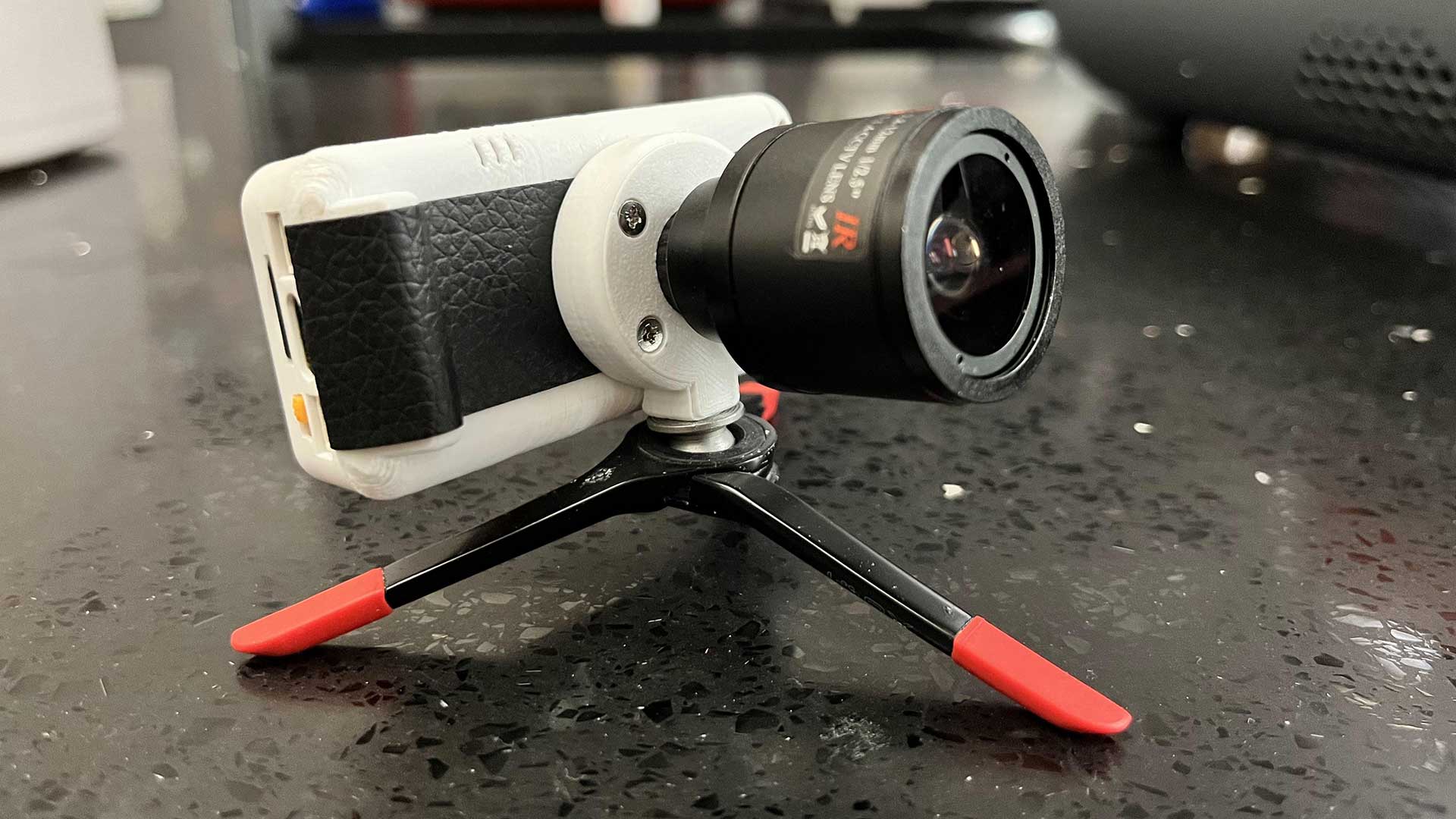


There have been a lot of DIY cameras popping up over the last few years. Most of them have been powered by the Raspberry Pi. This one, however, is a little different. At the heart of Chen Liang’s camera is an ESP32 microcontroller.
It sports a built-in 2.33″ touchscreen display and an M12 lens mount. Inside, sensors go up to 5-megapixels, so we’re not talking super-advanced tech, but it’s a fun-looking project.
A tiny interchangeable lens camera
It looks more like an interchangeable lens action camera than a small mirrorless one. But is there any real difference between those two descriptions? The original kit on which it’s based, though, isn’t a camera at all. At least not directly.
It’s the Lilygo T-Display S3 Pro (buy here) and it’s sort of like an ESP32-powered DIY iPod Touch – with a 2.33″ screen. A small handheld device with a touchscreen that lets you do whatever you code it to do, with the option to connect to your WiFi. But it does support a camera connection. It’s this connection that Liang utilised to connect a camera module.


It supports three camera modules at 2, 3 or 5 megapixels in resolution, and they all appear to be 1/5″ sized sensors. This isn’t a very large sensor at all, but looking at the examples shown in the video, it’s possible to get a pretty shallow depth of field.
Some assembly required
Liang had to redesign and 3D print the back of the case in order to account for the camera module’s M12 lens mount. He’s made the files available to download on Thingiverse, though, so you can make your own.
He’s also made a sample camera app available for testing, as well as the required code that makes it work. It appears that Liang is urging us to make them our own rather than just run his code. It will be interesting to see how many take up that challenge.
Why ESP32?
Although the Raspberry Pi is a powerful computer – relatively speaking – it’s quite limited in some ways. The ESP32 isn’t as powerful and is perhaps an odd choice as a camera controller, but it offers a lot more versatility. Specifically, using an ESP32-based board allows for a lot of future expandability.
For example, you can connect a gyro and accelerometer to automatically detect between horizontal and vertical orientation for your photos and videos. Or, perhaps, to store camera shake data for video stabilisation in post. Maybe you just want to add a horizon level to make sure you’re shooting straight.
You can also attach GPS modules and various sensors to monitor things like temperature, humidity, air pressure, and even air quality. And as the ESP32 has built-in WiFi, it can communicate over the Internet. In fact, you could even add a SIM card slot and do away with WiFi altogether.
The ESP32 is often used for things like motion control devices. Devices like motorised sliders and such. This means you can potentially have your slider and camera communicating with each other to synchronise movement and shooting.
As I said. Versatile.
You can find the complete instructions to build the Mirrorless Camera for Makers, with links to all the files, on Instructables.
I think I might have to try making this one myself at some point.








